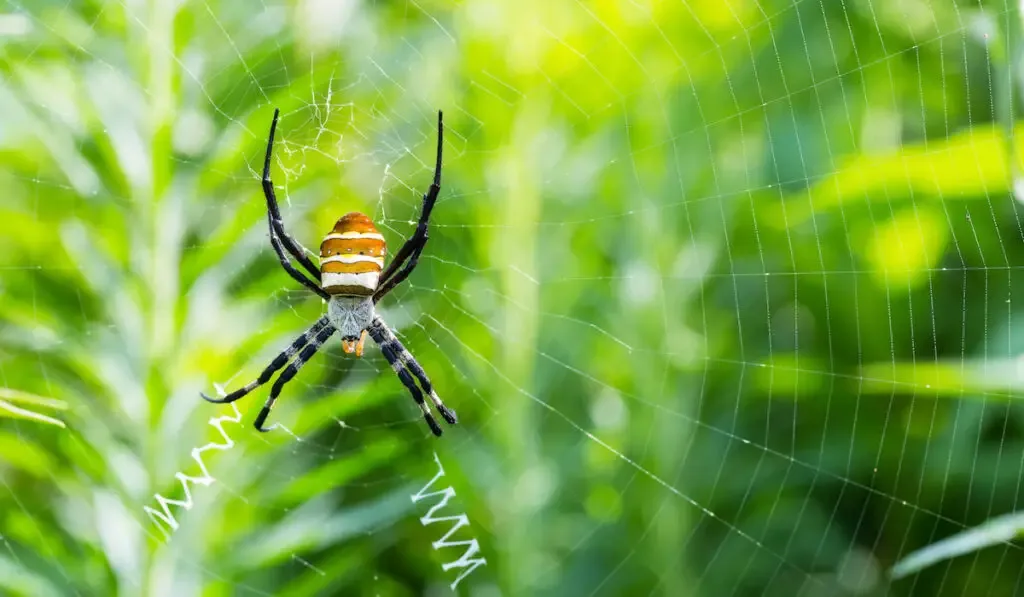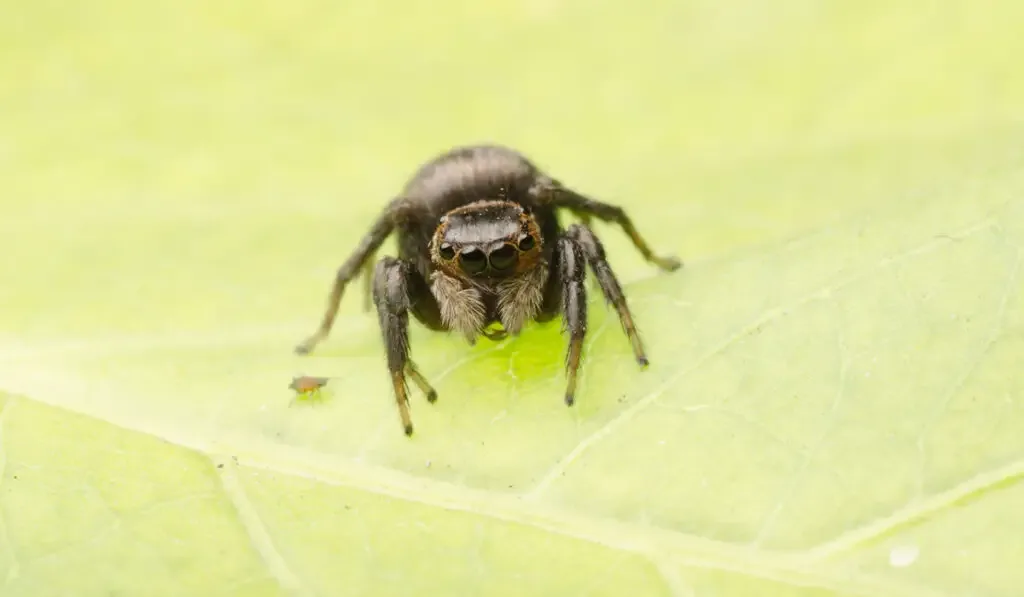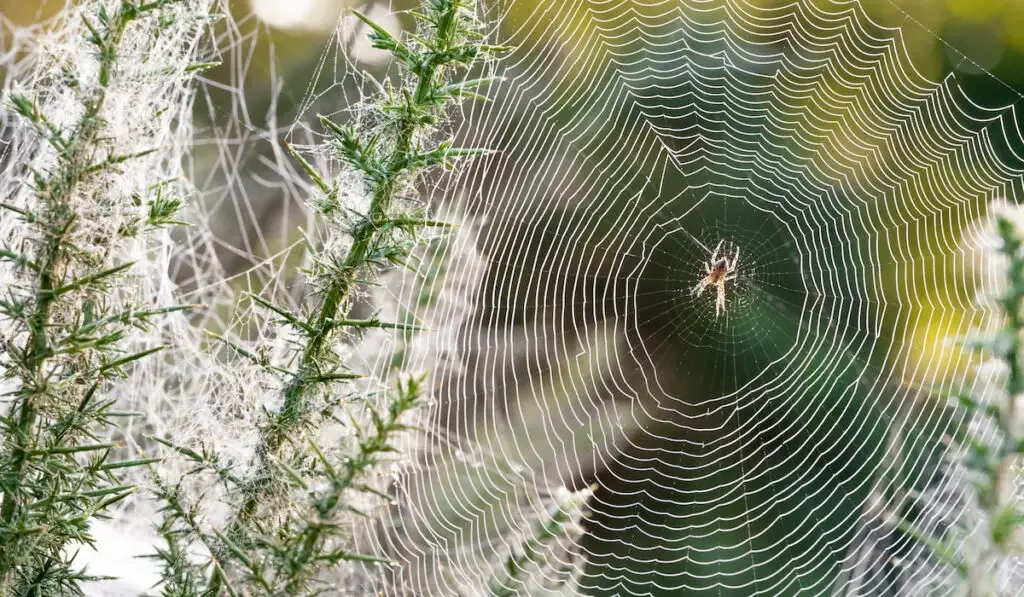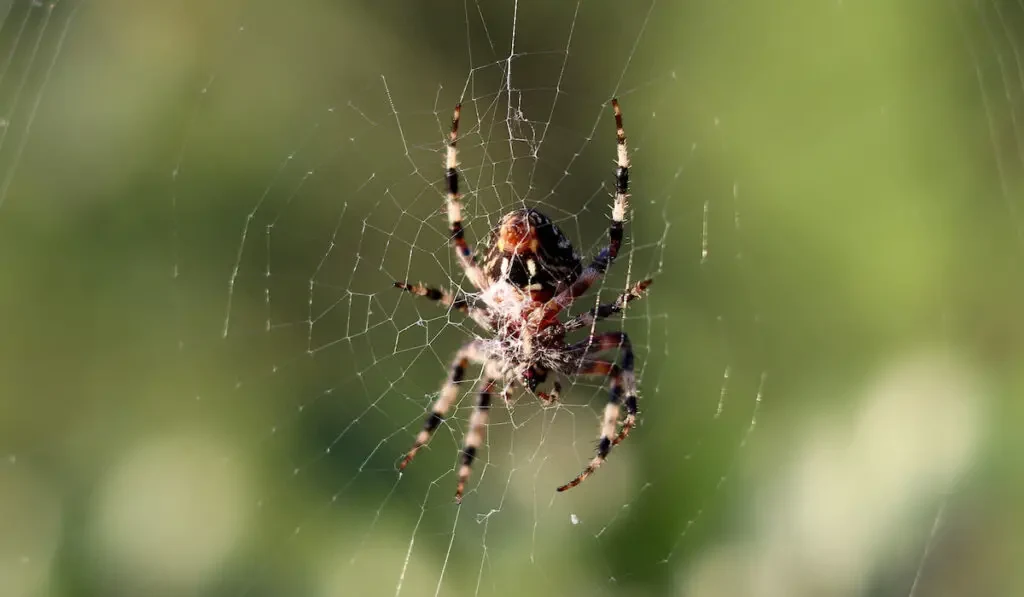You might scream in horror when you see a spider crawling your way. No matter how much you know about spiders, the biggest facts that stick out are that they have fangs and venom that can leave a nasty bite.
Whether you love them or fear them, there’s no denying spiders are interesting vertebrates with strange behaviors. Learning more about them can reduce fear and help you identify the harmless from the dangerous.
Statistics show that at least three out of four rooms in your house probably have a spider living in them. Yikes! It’s time to answer your questions about these eight-legged predators.

Table of Contents
1. Why Do Spiders Wiggle Their Bums?
Spiders wiggle their bums for a few reasons.
Spiders are ultra-sensitive to movement on their webs. Many female spiders eat the males either before, during, or after mating. To increase their chances of survival, male spiders will wiggle their bums in the air.
Females can sense that the movement is different from their prey, so might spare the male long enough for them to mate.
Male Peacock spiders are the best bum wigglers of all. They use their dancing skills to entice females before mating. If they make even a single step out of sync, they may get eaten.
Spiders also wiggle their bums when making their webs. When spiders start building their webs, they find an anchor point, like a branch or curtain rail, and release silk from their bums.
Using their legs, they wiggle their bums to get the silk out and place it firmly on their chosen spot. Spiders then start moving back and forth, adding silk and wiggling their bums as they go. It’s almost cute.
Spiders create many different types of web designs and structures. The most common ones use radial and orb lines to create that familiar round web pattern.
Radial lines anchor straight from the center of the web outward. Orb lines connect these lines to each other, making the perfect net for catching prey.
2. What Does It Mean When a Spider Lifts Its Back?
Spiders may come across as brave warriors ready to take on anyone who crosses their paths, but in reality, they are timid arachnids.
When they feel threatened, their first choice is to flee the scene of danger.
If they can’t get away, they will shift into defense mode and lift their abdomens (back) high into the air. It makes them appear larger and more threatening.
Depending on the size of the spider, you might laugh when you see them raising their bums and doing a defensive jig.
These eight-legged creatures hate confrontation, so will do anything they can to distract the threat and make their escape.
Most spider bites occur because a spider saw no other means of escape. They usually aren’t dangerous, but you must be cautious of some like black widows and recluse spiders.
3. Why Do Spiders Move Their Front Legs?

Some spiders move their front legs as a defense mechanism. When their legs are raised it makes them appear bigger and deadlier.
They will also raise their front legs when fighting with other spiders.
What’s more, spiders don’t use muscles to move their legs. They use a mechanism called hydraulic power. Basically, they move their fluids around their bodies to move.
That hydraulic power is also the reason why spiders tap their legs. It makes their legs twitch in anticipation of movement. The many tiny hairs on their legs are sensitive to everything from electrical currents in the air to moisture changes.
One species of spider looks just like a red fire ant. It raises its front legs to mimic the antenna that ants have, effectively tricking any potential threats.
4. Why Do Spiders Put Their Feet In their Mouth?
Spiders have tiny, sensitive hairs on their legs that can sense movements and sounds. They put their feet in their mouths to preen. Many small creatures are subject to dust particle build-up.
For spiders to move with maximum efficiency, they must keep their leg hairs free of any dirt. Spiders like to keep themselves clean just like us.

5. What is ‘Spider Rain’?
‘Spider rain’ is a crazy phenomenon that happens every so often in Australia. Spiders use a technique called ballooning and soar through the air millions at a time.
They climb up to high spots, stick their bums in the air, and launch themselves off using their silk.
It’s a common spider behavior that happens all the time, maybe even right as you’re reading this sentence. Spiders usually balloon on their own but do it together when the weather and air pressure create certain electric charges.
When the conditions are perfect, they use the currents for precision launching. Gentle air currents at less than 7 m/h are optimal for ‘spider rain’.
Floods and wildfires also cause spider rain as they balloon themselves away from the danger. Fortunately, this phenomenon usually involves smaller spider species.
6. Do All Spiders Live Alone?
Spiders usually live solitary lives, but some species enjoy living together.
Anelosimus eximius are one such species. They construct epic webs and create giant colonies that live in harmony. It’s a scary sight to behold for an arachnophobe.
Together, these spiders share the daily roles of caring for eggs, maintaining the web, and catching prey.
Webs can become too big. When this happens, the spiders catch less prey than you might think and it can destroy the colony.
In certain colonies, some females simply live as non-reproducing helpers. They never lay eggs.
Social spiders don’t have an equal division of labor within the colony, but bigger spiders usually carry the prey.

7. Why Do Some Spiders Eat Their Webs?
Spider webs are ultra-strong. It’s one of the strongest natural substances on the planet. Most spider species build a new web every night. A few don’t build webs at all.
Most spiders abandon their webs without eating them. That’s why you have to clear away the cobwebs. The females of certain spider species will use their old webs to cover their egg sacs.
Some spiders, like orb-web-spinners, eat their web when they finish using it each night. They reabsorb the amino acids from the silk proteins.
8. Why Do Male Spiders Give Females Presents?
Female spiders are insatiable. They love to eat. In fact, spiders consume more food in a single day than we do. Comparatively, of course.
Male spiders still carry the title of ‘Prey’ in the female’s eyes, so they have to do everything they can to stay alive. It starts with the bum wiggle and often involves present giving.
These spiders will wrap an insect in silk, do their mating dance, and then give the present to the female. If the female is impressed, they will mate.
Some male spiders are lazy and won’t catch prey. They will wrap old leaves or half-eaten prey and deliver to their desired mate. Sometimes they fool her, but other times they aren’t so lucky.
Conclusion
Over 30,000 unique spider species exist. Each has a unique set of behaviors.
Some build webs, others don’t. Some live in a group, while others live alone.
You have an almost endless world of exploration with these interesting arachnids.
Resources
- https://championspest.com/six-interesting-funny-facts-spiders/
- https://grist.org/living/male-black-widows-disarm-females-by-wiggling-their-butts/
- https://bestlifeonline.com/spider-facts/
- https://www.discoverwildlife.com/animal-facts/insects-invertebrates/facts-about-spiders/
- https://www.sciencenewsforstudents.org/article/electric-currents-may-tell-ballooning-spiders-to-fly
- https://www.wonderopolis.org/wonder/why-do-spiders-spin-webs
- https://animalworldfacts.com/why-do-spiders-raise-their-abdomen
- https://www.cbc.ca/kidscbc2/the-feed/5-fun-facts-about-spiders
- https://www.realclearscience.com/blog/2013/02/spiders-their-amazing-hydraulic-legs-and-genitals.html
- https://www.newscientist.com/article/2140365-spider-waves-its-front-legs-like-antennae-to-mimic-warlike-ants/
- https://www.nature.com/articles/news.2008.1007
